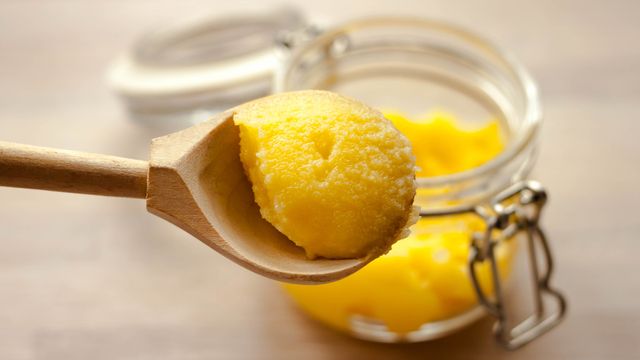
- Readers Rating
- No Rating Yet!
- Your Rating
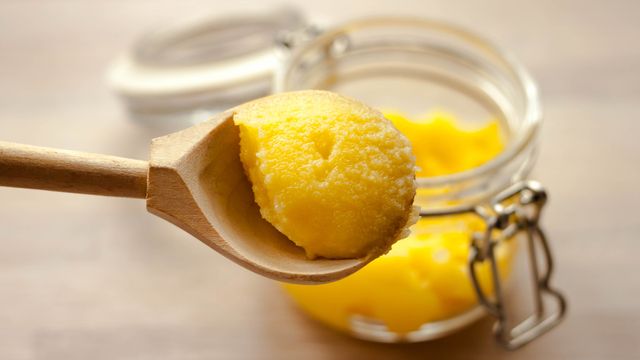
You have probably heard of clarified butter, the food that has become very famous thanks to the number of benefits attributed to it. In reality, gui is a type of clarified butter originating from Pakistani, Arabic and Indian cuisine. In this mentta post we tell you all about what ghee is: from its history to its properties and the differences between it and butter.
What is ghee?
Well, this food is very popular in oriental cuisine, in fact it is known as Indian butter, and it has been a fundamental element in Ayurvedic medicine. Ayurvedic medicine is a medical system based on the balance between mind, body and spirit. On the other hand, its consumption has spread internationally thanks to the ketogenic and paleo diets due to its properties and benefits. It also has a better effect than butter, especially in people who are lactose, sugar and casein intolerant.
What is clarified butter? Clarified butter is butter that has undergone a slightly different process than regular butter. It is therefore a butter-processed milk fat that separates the milk solids from the water in the milk fat. More heating time is allowed to separate the fat from the milk solids. In fact, the WHO advises that 10% of daily calorie intake should come from this type of fat.
How is ghee made? It is made from cow’s or buffalo’s butter. It is exposed to heat for a long period of time, while the protein is separated and the water evaporates. The result is a clarified butter with a golden colour and a strong and delicious nutty aroma.
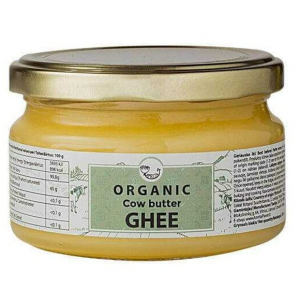
Benefits
Ghee has become one of the most popular foods on everyone’s lips. This is due to its numerous benefits and nutritional properties:
- It is a good laxative: it lubricates the digestive tract and stimulates the outflow of bile, thus promoting intestinal transit and the elimination of toxins.
- Antioxidant and anticarcinogenic properties: vitamins A and E and selenium are components of ghee that make it protect cell membranes from the action of free radicals.
- Good for cardiovascular health: moderate consumption of ghee promotes cardiovascular health. It regulates triglyceride and cholesterol levels in the blood, strengthens the nervous system and benefits cognitive function.
- It favours the digestive process: gastritis, reflux, heartburn… all these problems are controlled thanks to this powerful food. It stimulates the digestive fire and soothes the gastric mucosa. It also makes it easy to absorb fat-soluble nutrients.
- Helps to reduce inflammation: In case of underlying inflammation, ghee supports the inflammation process thanks to omega-3 and omega-6. Vitamin K2 is also essential for bone health and blood clotting.
- It is an ally in the weight loss process and against diabetes and overweight: many studies link the butyric acid content to improved insulin sensitivity.
Uses of ghee
Like most foodstuffs, its use is more than just a simple cooking ingredient, and ghee is no exception. It is very versatile and its functions are very varied:
In cooking: this product gives food a sweet, nutty taste. In Indian cuisine, the product is often used to sauté vegetables, or to replace vegetable oils. Ghee is therefore ideal for: creams and soups, rice dishes, salads and dressings, risotto, butter substitute, sautéed white meats…
In medicine: this product is ideal for Ayurvedic medicine, which is characterised by the use of 100% natural foods and ingredients for healing. Therefore this food was used for the treatment of eyes as a reducer of irritable, dry eyes, ocular hypertension… a few drops can be applied directly into our eyes.
It is also suitable for burns, thanks to its healing properties and its cold effect which heals burns more quickly. In this case, apply a little ghee to the affected area and it will soon heal with less likelihood of scarring.
Finally, ailments of the colon are not a problem for this food, as its composition and properties make it a lubricant and cleanser of the body’s channels. Here, in this case, it is necessary to take a spoonful of the substance with cumin, turmeric, pepper and ginger.
In cosmetics: ghee has great benefits for the skin and is used as an “oil” on the skin, hair and nails.
In the first case, the product is applied to the skin to lubricate and maintain the natural shine and nourishment (massaged in and then rinsed off under the shower).
For the second case, it is only necessary to apply the ghee on dry hair and massage the head and later remove the liquid from the hair in the shower.
Finally, for dry cuticles, this type of butter helps to keep them healthy and strong. Apply the product on the nails and cuticle, hold for a few minutes and finally remove with a cloth or soap.
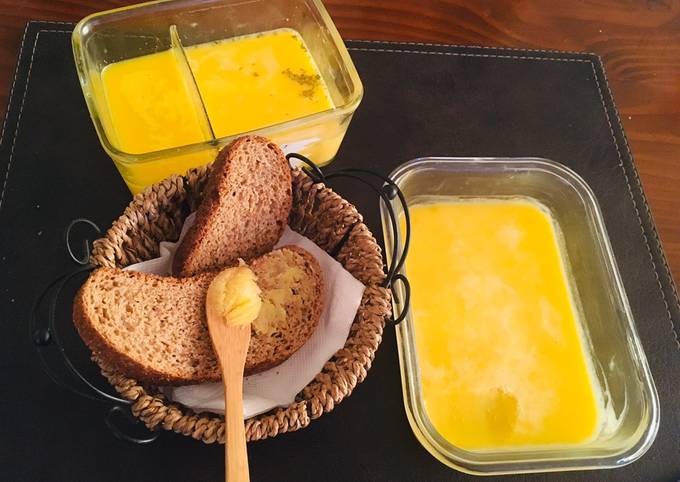
Difference between butter and ghee?
The main difference between the two products is the manufacturing process and the composition. Butter contains milk fat, milk solids and water. Ghee, on the other hand, is a substance where the water content is reduced by filtering out the precipitated milk solids. In other words, the two foods differ mainly in their production process: ghee is obtained by heating the butter, so that the water evaporates and the solids (proteins) are removed. In short, clarified butter is a product from which proteins, fats and sugars have been removed. Ghee is heated longer until the solids are toasted without burning.
Another major difference between these two foods is their resistance to high temperatures. The trendy product has a higher smoke level. As it is a saturated fat, it can be cooked at higher temperatures (it keeps up to 150º) as it will not burn the milk solids.
In terms of taste, butter is creamy and sweet, while clarified butter has a more intense, slightly nutty flavour. In addition, ghee is more than suitable for lactose intolerant people due to its easy digestibility.
Finally, the most talked-about difference among consumers: the price. The trendy food, as expected, can be up to three times the price of traditional butter.
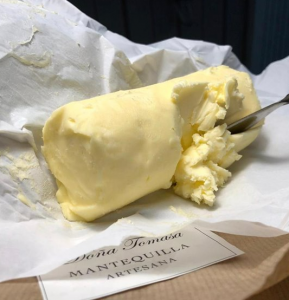
Well, that’s all for today. If you’ve ever heard of ghee, now you can go into detail about its properties and uses in cooking and cosmetics. Likewise, if you want to learn a little more about the world of butter, don’t miss this post in which we tell you the differences between butter and margarine. Don’t miss it on mentta’s blog.
